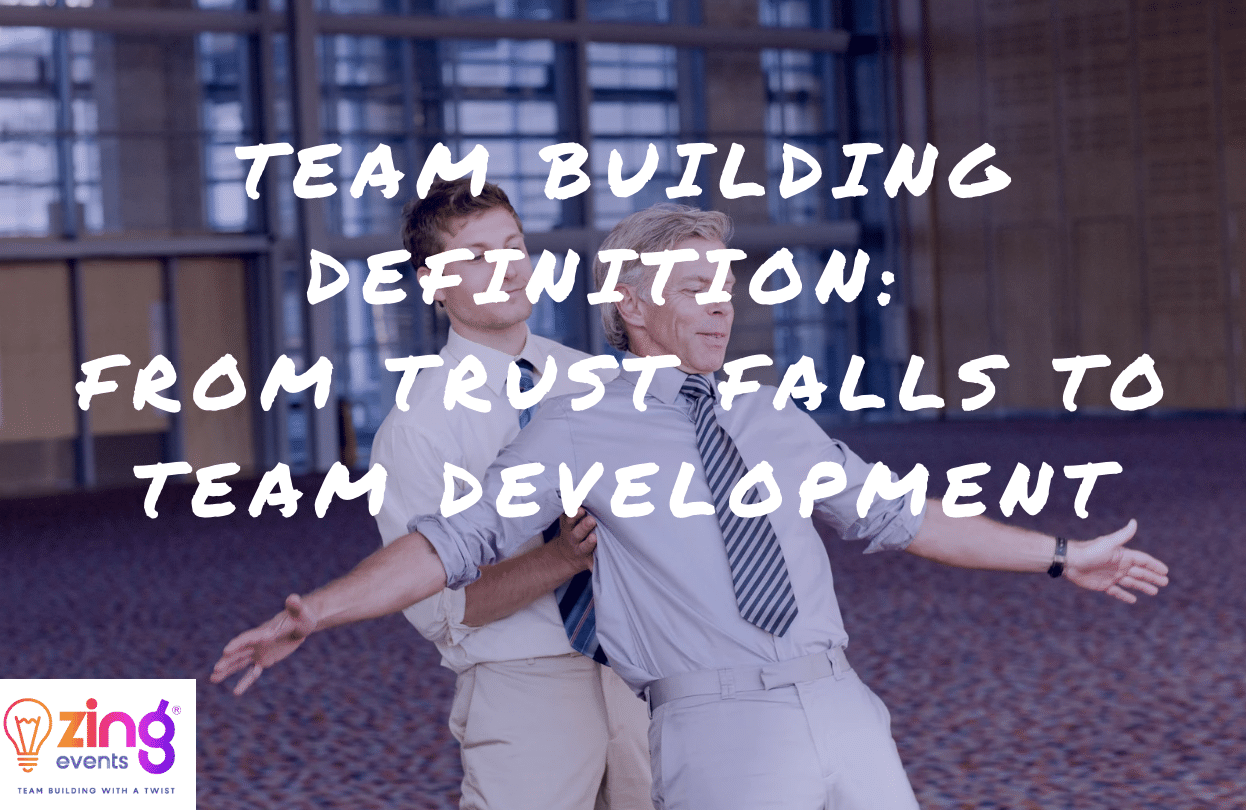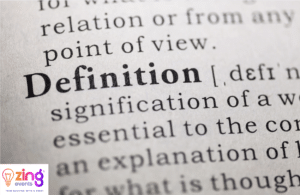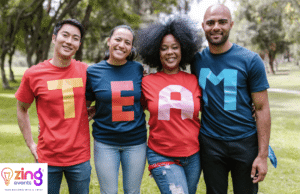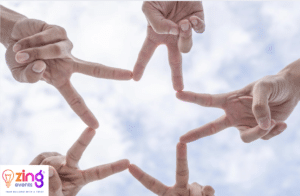The original team building definition as we know it today was practically born in the 1990s — an era where trust falls reigned supreme, and team days often felt more forced than fun. If you hear the phrase team building, chances are you instantly picture an awkward trust fall or a cringe-worthy game of charades. And honestly, you wouldn’t be wrong.
Fast forward to now, and team building has evolved into an umbrella term that covers almost everything: axe throwing, escape rooms, sushi-making classes, even a day out at the horse racing. There’s a grain of truth in all of it — doing something fun, social, and slightly outside the office does help build teams. But when we peel back the layers, what actually is the true definition of team building?
What is the Team Building Definition, Really?
At its core, team building is about strengthening the relationships between individuals in a group to improve communication, trust, and collaboration. It’s not just about sharing laughs or winning trophies; it’s about creating an environment where people can perform at their best because they trust and understand each other.
Whilst the Cambridge Dictionary Team Building Definition is this:
The best team building definition is this:
Team building is a deliberate process that provides a platform to elevate company culture, deepen interpersonal relationships, and enhance team performance through structured activities.
When done correctly, team building is more than just an afternoon out. It’s an investment in the social capital of your business.
How the Definition of Team Building Changed Over Time
In the 90s, team building meant physically catching your coworker as they fell backwards into your arms (no pressure). It was awkward, nerve-wracking, and honestly, a little embarrassing. The goal was simple: build trust fast.
Today, the modern workplace demands more than just blind trust. Teams are often remote, hybrid, multicultural, and diverse in ways that were unimaginable a few decades ago. As a result, team building has expanded to include activities that nurture creativity, celebrate differences, and foster a strong sense of community.
So whether it’s solving puzzles together in an escape room or competing in a dragon boat race, today’s team building is more about shared experiences, collaboration, and soft skill development than ever before.
Why “Just Having Fun” Isn’t Enough
While a day axe throwing or at the horse racing can definitely boost morale, it’s not a guarantee that your team will walk away stronger. Fun is important — but purposeful fun is what truly makes the difference.
Here’s the secret most people miss:
The best team building experiences are carefully choreographed by team development experts. They design activities that naturally bring out collaboration, creativity, communication, and light-hearted competition — the real building blocks of high-performing teams.
In these settings, every game, challenge, or scenario is subtly engineered to mimic real workplace dynamics in a safe, relaxed environment. That’s how the real magic happens: teams bond authentically and skills develop organically.
The Key Elements of True Team Building Definition
The most effective team building activities all share common traits. They focus on:
1. Collaboration
The strongest teams aren’t just collections of talented individuals; they’re groups who know how to work together seamlessly. Great team building exercises push participants to problem-solve, communicate, and lean on each other’s strengths.
2. Creativity
Breaking out of the daily grind sparks new ideas and fresh ways of thinking. Activities that challenge your team to be creative — like building a raft, designing a brand-new product, or composing a team anthem — translate that imaginative spirit back into the workplace.
3. Light-hearted Competition
Healthy competition fosters engagement and excitement without the stress of actual work pressure. Whether it’s a scavenger hunt or a cook-off, friendly rivalry can increase motivation and help teams bond more quickly.
How to Leverage Team Building to Its Fullest
If you want to get the most out of your team building investment, here’s what you need to know:
-
Be Intentional: Choose activities that are designed to meet specific goals, like improving communication or breaking down silos between departments.
-
Work with Experts: Trust the professionals. Team development experts know how to create experiences that look and feel like pure fun but are strategically built to deliver real outcomes.
-
Follow Up: The best team building doesn’t end when the day does. Bring the lessons back into your workplace culture through ongoing collaboration exercises and open conversations.
Conclusion: Redefining Team Building Definition
The team building definition has come a long way from the days of awkward trust falls. Today, it’s about fostering authentic connections, enhancing skills, and creating a culture where people feel valued and motivated.
So, whether you’re throwing axes, cooking up a storm, or racing dragon boats, remember: when structured properly by experts, these activities become more than just a day of fun. They become the foundation of a stronger, more united team.
Next time you plan a team building day, think beyond the surface. Seek out experiences that are designed to build collaboration, creativity, and culture — and watch your team thrive.












